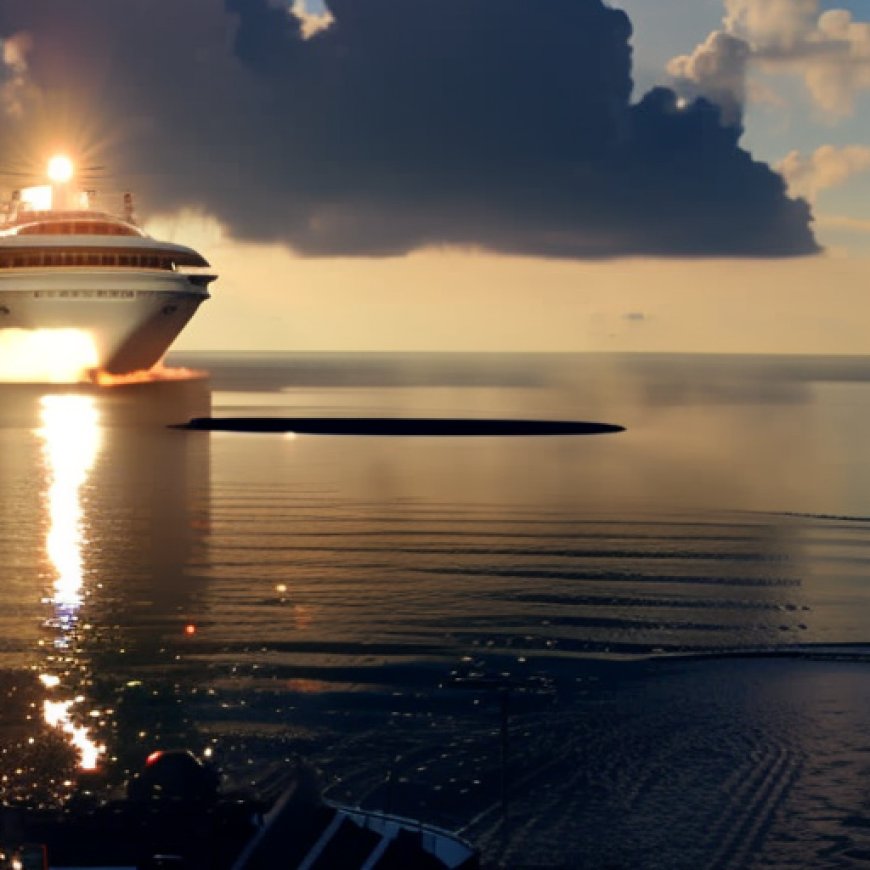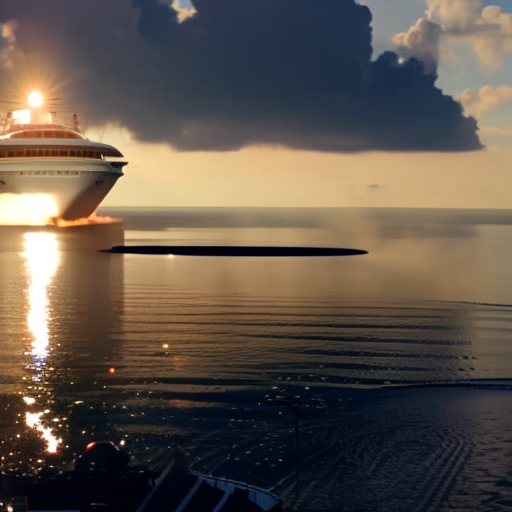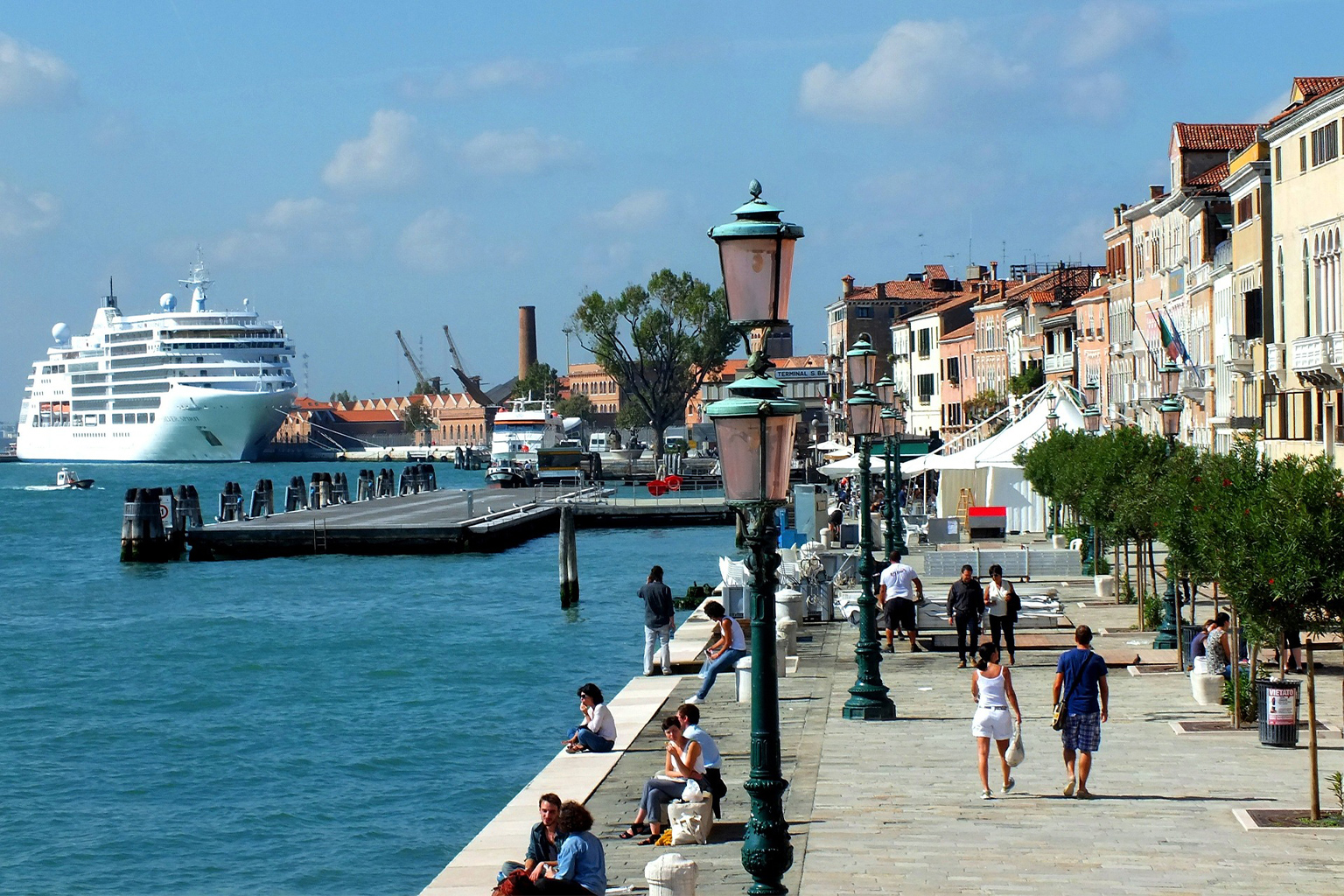Cleaning up cruise ships’ environmental wake
Cleaning up cruise ships' environmental wake Mongabay.com


Sustainable Development Goals (SDGs) and the Cruise Ship Industry
- For years, campaigners have highlighted the unsustainable practices of the cruise ship industry, including the massive vessels’ dumping of sewage and wastewater, and their emissions of air pollutants and greenhouse gases.
- The cruise industry says it’s working hard to limit its environmental footprint, with the adoption of advanced wastewater treatment systems, cleaner fuels, and other sustainability measures.
- Jurisdictions around the globe have begun tightening rules to limit the effects of visiting ships.
- Critics and advocates remain unconvinced, arguing that much more needs to be done at a far faster pace to tackle cruisers’ global impact on the ocean and air.
Cities Regulating Cruise Ships to Tackle Pollution and Overtourism
In July, Amsterdam became the latest in a series of cities to regulate against huge cruise ships in an attempt to tackle pollution and the burden of overtourism. The Dutch capital joins other cities, such as Venice in Italy, Monterey Bay in California, and Bar Harbor in Maine, in seeking to limit the impact of cruises.
Around the same time, Transport Canada, a national regulator, took its own steps to tackle cruise waste: It upgraded measures that prohibit ship wastewater disposal in the sea from voluntary to mandatory. For years, Canada’s national waters were likened to a “toilet bowl” due to lax regulations enabling cruise ships passing through the country’s waters to dump sewage at will, according to campaigners.
“Making the voluntary program into a mandatory one allows enforcement to come in and brings the possibility of fines,” Anna Barford, shipping campaigner for U.S.- and Canada-based NGO Stand.Earth, told Mongabay. She said cruisers dumped as much as 32 billion gallons, or about 121 million cubic meters, of waste in Canadian waters in 2019. “This is absolutely a good and right step.”
Meanwhile, the cruise industry says it’s working hard to limit its environmental footprint across the globe, including greenhouse gas emissions and harm to oceans and air. Critics and advocates argue that much more needs to be done at a far faster pace to tackle cruisers’ global impact.
Annual Scorecard Grades Cruise Ship Companies on Environmental Impacts
U.S.-based NGO Friends of the Earth releases an annual scorecard that grades cruise ship companies on their environmental impacts. The most recent, from 2022, looked at 18 major cruise lines, giving the top overall grade, a C+, to a single company. Three others received C-range grades, seven got D-range grades, and seven got the lowest grade: an F. Despite the poor overall scores, some companies are improving when it comes to issues such as air and water pollution, said Marcie Keever, the group’s oceans and vessels program director. But the industry writ large remains mired in harmful activities, underpinned by a general lack of transparency by many players, she said.
“For all the parameters that we look at with our report card on the cruise industry — for all of the big cruise ship companies almost across the board — none of them are doing what they should be doing when it comes to environmental protection and their footprint,” Keever told Mongabay.

Cleaning up Waterborne Waste
For some time, campaigners have highlighted the dumping of sewage and wastewater as the face of an unsustainable cruise industry.
To tackle the issue, cruise ship owners are installing advanced wastewater treatment systems. Such treatment systems can completely cleanse a ship’s wastewater — from sources such as sinks, showers and toilets — to the point that some of it can be recycled for other on-ship uses, according to Sascha Gill, vice president of sustainability at Cruise Lines International Association (CLIA). The trade group represents the owners of 292 cruise ships, roughly 95% of the global fleet, according to Gill. CLIA member companies served roughly 30 million passengers per year pre-COVID-19.
Of the 264 ships in CLIA members’ fleets whose owners responded to a survey by the association, 202, or 76.5%, are equipped with advanced wastewater treatment systems (28 did not respond). Gill told Mongabay that CLIA members will achieve 100% coverage as older vessels are retired and new ones come with readymade systems installed. He didn’t give a time frame for this transition.
However, critics contend a lack of oversight and transparency persists in the industry when it comes to the treatment facilities’ effectiveness. “We don’t have the details, and we don’t have, which is the most important, independent
SDGs, Targets, and Indicators
SDGs Addressed or Connected to the Issues Highlighted in the Article:
- SDG 6: Clean Water and Sanitation
- SDG 11: Sustainable Cities and Communities
- SDG 13: Climate Action
- SDG 14: Life Below Water
- SDG 15: Life on Land
Specific Targets Based on the Article’s Content:
- Target 6.3: By 2030, improve water quality by reducing pollution, eliminating dumping and minimizing release of hazardous chemicals and materials.
- Target 11.6: By 2030, reduce the adverse per capita environmental impact of cities, including by paying special attention to air quality and municipal and other waste management.
- Target 13.1: Strengthen resilience and adaptive capacity to climate-related hazards and natural disasters in all countries.
- Target 14.1: By 2025, prevent and significantly reduce marine pollution of all kinds, particularly from land-based activities, including marine debris and nutrient pollution.
- Target 15.1: By 2020, ensure the conservation, restoration and sustainable use of terrestrial and inland freshwater ecosystems and their services, in particular forests, wetlands, mountains and drylands, in line with obligations under international agreements.
Indicators Mentioned or Implied in the Article:
- Indicator 6.3.2: Proportion of bodies of water with good ambient water quality.
- Indicator 11.6.1: Proportion of urban solid waste regularly collected and with adequate final discharge out of total urban solid waste generated, by cities.
- Indicator 13.1.1: Number of deaths, missing persons and directly affected persons attributed to disasters per 100,000 population.
- Indicator 14.1.1: Index of coastal eutrophication and floating plastic debris density.
- Indicator 15.1.1: Forest area as a proportion of total land area.
Table: SDGs, Targets, and Indicators
| SDGs | Targets | Indicators |
|---|---|---|
| SDG 6: Clean Water and Sanitation | Target 6.3: By 2030, improve water quality by reducing pollution, eliminating dumping and minimizing release of hazardous chemicals and materials. | Indicator 6.3.2: Proportion of bodies of water with good ambient water quality. |
| SDG 11: Sustainable Cities and Communities | Target 11.6: By 2030, reduce the adverse per capita environmental impact of cities, including by paying special attention to air quality and municipal and other waste management. | Indicator 11.6.1: Proportion of urban solid waste regularly collected and with adequate final discharge out of total urban solid waste generated, by cities. |
| SDG 13: Climate Action | Target 13.1: Strengthen resilience and adaptive capacity to climate-related hazards and natural disasters in all countries. | Indicator 13.1.1: Number of deaths, missing persons and directly affected persons attributed to disasters per 100,000 population. |
| SDG 14: Life Below Water | Target 14.1: By 2025, prevent and significantly reduce marine pollution of all kinds, particularly from land-based activities, including marine debris and nutrient pollution. | Indicator 14.1.1: Index of coastal eutrophication and floating plastic debris density. |
| SDG 15: Life on Land | Target 15.1: By 2020, ensure the conservation, restoration and sustainable use of terrestrial and inland freshwater ecosystems and their services, in particular forests, wetlands, mountains and drylands, in line with obligations under international agreements. | Indicator 15.1.1: Forest area as a proportion of total land area. |
Behold! This splendid article springs forth from the wellspring of knowledge, shaped by a wondrous proprietary AI technology that delved into a vast ocean of data, illuminating the path towards the Sustainable Development Goals. Remember that all rights are reserved by SDG Investors LLC, empowering us to champion progress together.
Source: news.mongabay.com

Join us, as fellow seekers of change, on a transformative journey at https://sdgtalks.ai/welcome, where you can become a member and actively contribute to shaping a brighter future.







